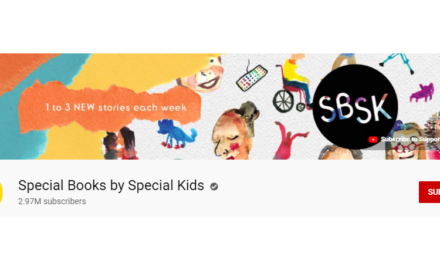
AUGUST 17, 2021
full tilt
Silence Can Be Bad Business Model for Content Creators
All business is personal at some level. But for many content entrepreneurs, their business model is all personal.
These entrepreneurs invite audiences into their “home” of some sort. Influencers share themselves and their lives in every Instagram post. Creators build their lifestyle content around their roles as parents, travelers, pet caretakers, etc.
Being an always-on business can be exhausting. And in a successful business, your audience follows you around, thinking they know you, trusting the stories you tell and the posts you share.
So when a particularly challenging time arises that you may want to keep private, you face a battle between transparency and authenticity.
Take Myka and James Stauffer, who turned their family life into a content business. They eventually had about 1M subscribers, including 700K on her YouTube channel and 300K on the family’s vlog. They achieved those bigger numbers after they began talking about their journey to adopt a boy from China, according to a profile in The Cut.
Three years later, life changed. Subscribers were posting comments asking where the boy was. The couple, who had earlier shared his diagnosis of autism spectrum disorder level three, ultimately revealed the boy was with a new family who, they said, could better address his needs. Hashtag campaigns critical of the couple popped up on social media. Brands once eager to work with them disappeared. Their sheriff’s office even conducted an investigation into the safety of the children still at their home. (Read The Cut piece for the long, fascinating story.)
Though extreme, the Stauffer family’s experience is a lesson for all personally focused content creators. Just as you need to create a business strategy, you also need to establish parameters around your content in your content business model.
Tilt Advice
First, appreciate the difference between authenticity and transparency. All the content you create should be authentic – truthful about your words and actions. But you, as a content business, don’t have to be transparent (i.e., share) about everything.
Ask: What am I willing to share with my audience? What am I not willing to share?
Really dig deep in your answers. Think about the most extreme situations. Would you be willing to talk about that with your audience? What are you not willing to talk about?
Can you operate a successful content business under those parameters? If so, craft the parameters around your content. But don’t keep it to yourself. Put together a few sentences for your about or bio pages. You don’t have to list everything you won’t share, but be transparent so that your audience understands the parameters you’ve established around your content.
Celebrity Jada Pinkett Smith launched Red Table Talk in 2018. Designed to be an unfiltered conversation among her mom, child, and celebrity guests, Jada knew she had to be transparent upfront. Early on, she addressed never-ending rumors about her marriage, relationships with other celebrities, and more.
But she deliberately left out one story. But by 2020, she couldn’t ignore it. She and her husband Will Smith sat at the Red Table together to address her “entanglement” with another man four years earlier. Jada’s experience reminds us that once you set the parameters, you better live them authentically.
If you make a mistake or experience a difficult challenge as you go about your content business, admit it right away. Audiences are far more likely to appreciate your honesty than they will criticize the error. That’s the sign of an authentic creator.
(You also can develop a two-tier social media strategy – one for your personal professional brand and one for your personal life where you only connect with your real friends.)
– Ann Gynn
To learn another lesson Jada Pinkett Smith and the Stauffer family can teach us, plus a tip if you want to grow a long-term business, read the longer story.
Mother-Daughter Creators Turn Instagram Page into $400K-a-Year Business
Entrepreneurs: Lexi Harrison and Beth Sinclair
Biz: Crowded Kitchen
Tilt: Family-friendly vegan recipes
Primary Channels: Blog and Instagram (202K)
Other Channels: Pinterest (33.1K) and Facebook (2.7K)
Time to First Dollar: About a year. A sponsor paid $500 for an Instagram post that used its product – toasted coconut chips – in a recipe. “We were just like, ‘Oh my god, what? This is crazy,’ says Lexi. “We saw the potential there … It was cool to see where this could take us.”
Rev Streams: Sponsored content, ad revenue, plus freelance photography, videography, recipe development
Our Favorite Actionable Advice
- Keep your eyes open: Lexi and Beth didn’t start on Instagram to build a business. But a sponsored post offer from a brand opened their eyes to the possibility.
- Divide and conquer: A business partnership can be hard, but it’s easier when each person has a delineated role. Lexi’s the content producer, while Beth is all about the recipes.
- Build owned platform: Recognizing they could earn more revenue, these content entrepreneurs launched a blog-based website.
Some of the Story:
Lexi Harrison’s first job out of college was for a cooking and food website. Officially, she was hired to run social media and edit content. In reality, Lexi had her hand in all kinds of tasks – from learning photography and videography to creating content. There was a lot to figure out, but she had a leg up.
A collegiate long-distance runner with food sensitivities, Lexi had launched an Instagram account – Super Food Runner – where she shared food photography and healthy recipes. In her senior year, her mom Beth Sinclair took it over when Lexi studied in Germany. The duo continued to build the page after Lexi’s graduation. It was all just for fun. “We had no intention of putting it into a business,” Lexi says.
But that’s exactly what happened. Today, the mom-and-daughter duo runs Crowded Kitchen, a blog with social media channels that focuses on vegan cooking. In 2020, they earned $200K. This summer, they are on track to hit over $400K this year. Lexi’s husband, Brent Harrison, joined the team full-time a year ago.
“In some ways, I knew that I would end up in an entrepreneurial role because I don’t really like working in a traditional job,” Lexi says. “I always hoped that I’d do something on my own. But it just kind of happened in a way.”
There was nothing fancy about Super Food Runner in the early days. The duo took the food photos on their iPhones. But in 2016, Instagram didn’t limit who saw posts; Lexi and Beth’s photos were popular. A picture of fruit-infused water in a pitcher would quickly rack up 20K likes.
In 2017, a year after Lexi graduated from college, Super Food Runner was growing, reaching about 50K followers, and netting enough sponsored post contracts to take it full-time. Lexi quit her job at that New York-based food website, moved home to Michigan, and with Beth, rebranded the Instagram account as Crowded Kitchen.
In the beginning, the two focused on boosting the quality of their photography and creating more plant-based recipes. Lexi is passionate about photography, so she invested in learning how to get better. Beth, Lexi’s high school track and cross-country coach, has long been interested in nutrition and healthy eating. Beth excels at recipe development.
“We both leaned into those roles specifically,” Lexi says. “I think just really specializing and really constantly honing our skills, that’s what made a really big difference for us in terms of growing.”
The duo also had a rudimentary WordPress site where they shared recipes, but they realized a more formal blog could be another revenue stream. That launched in 2019. On that site, they don’t have to worry about shifting social media algorithms that make it more difficult to reach fans and new followers.
But it does take more work. Instead of putting up a recipe on Instagram, they have to write an 800-word blog post, take shots of the preparation, and think about search engine optimization to ensure readers find Crowded Kitchen when they hunt for recipes online. The work, however, has been worth it, Lexi says.
“It’s definitely been slow but steady growth,” she says. “We’re looking long term. It’s hopefully going to be the larger focus of the business because we don’t want to have to rely on the algorithms. We’ve seen really great growth, and we’re excited about the future of it.”
Six years after launching that original Instagram page, Crowded Kitchen has grown its fans and readers through SEO on the blog and organically on Instagram. Revenue comes from a mix of sources – ads on the blog and sponsored content on both the blog and their social media channels. Food brands and other businesses also hire them for freelance photography, videography, and recipe development.
“We’ve pretty much increased 50% every year that we’ve been in business,” Lexi says. “It’s been really great growth.”
– Sarah Lindenfeld Hall
All the Story: To learn the three things that have led to their success and if a cookbook is in their future, check out the longer story.
quick talk
Caught on … Twitter
“Instead of coffee shops and retail, online will be the next generation of small business.” – Andrew Chen
things to know
Money
-
Medium’s new model: Writers on the platform have an added revenue option – subscription referrals. Partner program participants will get a personalized landing page and get half of the subscription fee for new readers who use it (minus the standard 2.9% and 30 cent processing fees). (TechCrunch)
Tilt Take: Marketing is necessary for any content business, so this “reward” makes sense. But it’s a lot of hard work for not much payoff – 100 new readers would net the writer only $227 a month. -
Micropayments only work here: Livestream videos are the only place where micropayments work well. Why? People tip, and the creator can acknowledge them in real time. (Simon Owens)
Tilt Take: We concur. Participatory tipping is a smart tactic. But content entrepreneurs shouldn’t expect tips after visitors read their content or watch a produced video.
Audiences
-
Business streaming service: Tech giant Salesforce is adding a streaming media company to its business properties. The lineup? Original entertaining and inspirational business-focused content to help sales teams, marketers, and executives. (Axios)
Tilt Take: Keep an eye on Salesforce if your brand creates business content. But all content entrepreneurs should look for unlikely media partners to distribute their content. -
Like-minded people: A TikTok video about friends deliberately excluding a woman named “Marissa” from a party earned over 14M views (it’s a longer story about how it all happened that’s worth the read.) That woman, Marissa Meizz, turned the experience into a good thing and ultimately launched No More Lonely Friends, “an online community of people looking to make friends in real life, or IRL, meet-ups across the country.” (New York Times)
Tilt Take: Though Marissa says she doesn’t plan to turn it into a business, she seems to be doing just that. Her free events around the U.S. are drawing hundreds of people, attracting interest from brands and prompting her to launch a merch line.
Tech and Tools
-
Google podcast rule changes: Next month, Google will enforce new requirements for podcast RSS feeds to show up in Google Podcasts recommendations: Include a valid, crawlable image, description, author name, owner’s email address, and link to home page. (Google)
Tilt Take: All those criteria should be available for your podcast anyway, so this should be no big deal. -
YouTube time-sucking busters: More apps and tools are coming along to help YouTube viewers cut down wasteful watch time. They let viewers read transcripts, see real thumbnails (not the clickbait ones), and set time limits. (Make Use Of)
Tilt Take: They’re all good reminders that YouTube creators must focus on creating quality content that will resonate with their audience so much that they won’t want to use the time-saver apps.
And Finally
-
What’s an ISBN?: Rick Steves didn’t even know every book needs an International Standard Book Number when he first published Europe Through the Back Door in 1979. He also created a cover so simple that the media thought it was a preview version. (Rick Steves on Facebook)
Tilt Take: You don’t have to know everything or make it perfect when you launch, as long as you’re willing to learn as you grow your business. That’s what Rick Steves did, and now his travel guide and tour company earns $100M a year (well, not 2020). -
Think outside the margins: Texas Monthly magazine expects to bring in $1M by licensing its content from its 50-year-old archive for film and TV projects. (Insider)
Tilt Take: You don’t have to limit your content to its original place. Explore how to use it to bring in additional revenue streams.
we’re a stan for Tiffanie Davis
In four years, Tiffanie Davis went from being a culture-shocked graduate student in the City of Light to establishing go-to online resources for Americans looking to become expats themselves.
To her 33.3K YouTube subscribers and 12K Instagram followers, she presents an attainable modern take on the American girl in Paris trope. For Tiffanie, vlogging was the one way she could share her experiences living abroad when France went into lockdown. Tidbits about French dating, Parisian apartment debacles, and Instagrammable arrondissement locations attracted eyeballs, especially those open to taking the plunge and starting somewhere new.
Before relocating to Paris, the Bostonian who lived in New York developed a set of digital classes and workshops for foreigners wanting to follow in her footsteps. Her latest course, Find a Job in France, a partnership with a French career recruitment website MisterBilingue is priced at $97. She also offers workshops on budgeting, forming a realistic timeline, and other resources priced up to $347.
Why we’re a Stan: Tiffany found she had a knowledge gap when she moved to Paris. Then, she came up with a solution for others who face similar challenges around moving to France. She also isn’t sticking only to YouTube; she’s building online courses where she has more control over the business model.
– Shameyka McCalman
the business of content
In this week’s Content Inc. podcast, Joe talks about how content creators at big corporations and those creating content for their own businesses need to figure out NFTs … and do it quickly.
In the latest This Old Marketing podcast, the guys reminisce about their 10-year-old prediction that LinkedIn would launch the Netflix for Business. This week Salesforce beat Netflix to the punch.
the tilt team
Your team for this issue: Joe Pulizzi, Ann Gynn, Laura Kozak, Marc Maxhimer, and Dave Anthony, with an assist from Sarah Lindenfeld Hall, Shameyka McCalman, and Don Borger.
Get more of the Full Tilt stories on TheTilt.com.
Know a content creator who’s going full tilt? DM us or email [email protected]
Was this email forwarded to you? Get your own sub here.
Copyright ©2021 Tilt Media LLC All rights reserved.
Unsubscribe | Update your profile | 17040 Amber Drive, Cleveland, OH 44111





